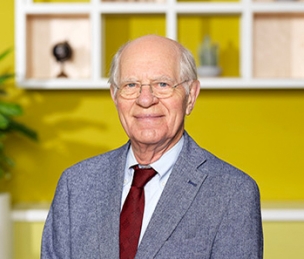Displaying 1 - 14 of 14
-
Levelt, W. J. M. (1997). Kunnen lezen is ongewoon voor horenden en doven. Tijdschrift voor Jeugdgezondheidszorg, 29(2), 22-25.
-
Levelt, W. J. M. (1997). Language. In G. Adelman, & B. H. Smith (
Eds. ), Elsevier's encyclopedia of neuroscience (CD-ROM edition). Amsterdam: Elsevier Science. -
Schiller, N. O., Van Lieshout, P. H. H. M., Meyer, A. S., & Levelt, W. J. M. (1997). Is the syllable an articulatory unit in speech production? Evidence from an Emma study. In P. Wille (
Ed. ), Fortschritte der Akustik: Plenarvorträge und Fachbeiträge der 23. Deutschen Jahrestagung für Akustik (DAGA 97) (pp. 605-606). Oldenburg: DEGA. -
Schiller, N. O., Meyer, A. S., & Levelt, W. J. M. (1997). The syllabic structure of spoken words: Evidence from the syllabification of intervocalic consonants. Language and Speech, 40(2), 103-140.
Abstract
A series of experiments was carried out to investigate the syllable affiliation of intervocalic consonants following short vowels, long vowels, and schwa in Dutch. Special interest was paid to words such as letter ['leter] ''id.,'' where a short vowel is followed by a single consonant. On phonological grounds one may predict that the first syllable should always be closed, but earlier psycholinguistic research had shown that speakers tend to leave these syllables open. In our experiments, bisyllabic word forms were presented aurally, and participants produced their syllables in reversed order (Experiments 1 through 5), or repeated the words inserting a pause between the syllables (Experiment 6). The results showed that participants generally closed syllables with a short vowel. However, in a significant number of the cases they produced open short vowel syllables. Syllables containing schwa, like syllables with a long vowel, were hardly ever closed. Word stress, the phonetic quality of the vowel in the first syllable, and the experimental context influenced syllabification. Taken together, the experiments show that native speakers syllabify bisyllabic Dutch nouns in accordance with a small set of prosodic output constraints. To account for the variability of the results, we propose that these constraints differ in their probabilities of being applied. -
Edwards, J., & Levelt, W. J. M. (1993). The control group study. In C. Perdue (
Ed. ), Adult language acquisition: Cross-linguistic perspectives. Vol. I Field methods (pp. 173-185). Cambridge University Press. -
Hoeks, B., & Levelt, W. J. M. (1993). Pupillary dilation as a measure of attention: A quantitative system analysis. Behavior Research Methods, Instruments, & Computers, 25(1), 16-26.
-
Levelt, W. J. M. (1993). Die konnektionistische Mode. In J. Engelkamp, & T. Pechmann (
Eds. ), Mentale Repräsentation (pp. 51-62). Bern: Huber Verlag. -
Levelt, W. J. M. (1993). Accessing words in speech production: Stages, processes and representations. In W. J. M. Levelt (
Ed. ), Lexical access in speech production (pp. 1-22). Cambridge, MA: Blackwell Publishers.Abstract
Originally published in Cognition International Journal of Cognitive Science, Volume 42, Numbers 1-3, 1992 This paper introduces a special issue of Cognition 011 lexical access in speech production. Over the last quarter century, the psycholinguistic study of speaking, and in particular of accessing words in speech, received a major new impetus from the analysis of speech errors, dysfluencies and hesMions, from aphasiology, and from new paradigms in reaction time research. The emerging theoretical picture partitions the accessing process into two subprocesses, the selection of an appropriate lexical item (and "lemma") from the mental lexicon, and the phonological encoding of that item, that is, the computation of a phonetic program for the item in the context of utterance These two theoretical domains are successively introduced by outlining some core issues that have been or still have to be addressed. The final section discusses the controversial question whether phonological encoding can affect lexical selection. This partitioning is also followed in this special issue as a whole. There are, first, four papers on lexical selection, then three papers on phonological encoding, and finally one on the interaction between selection and phonological encoding. -
Levelt, W. J. M. (1993). Lexical access in speech production. In E. Reuland, & W. Abraham (
Eds. ), Knowledge and language: Vol. 1. From Orwell's problem to Plato's problem (pp. 241-251). Dordrecht: Kluwer. -
Levelt, W. J. M. (
Ed. ). (1993). Lexical access in speech production. Cambridge, Mass.: Blackwell.Abstract
Formerly published in: Cognition : international journal of cognitive science, vol. 42, nos. 1-3, 1992 -
Levelt, W. J. M. (1993). Lexical selection, or how to bridge the major rift in language processing. In F. Beckmann, & G. Heyer (
Eds. ), Theorie und Praxis des Lexikons (pp. 164-172). Berlin: Walter de Gruyter. -
Levelt, W. J. M. (1993). The architecture of normal spoken language use. In G. Blanken, J. Dittman, H. Grimm, J. C. Marshall, & C.-W. Wallesch (
Eds. ), Linguistic disorders and pathologies: An international handbook (pp. 1-15). Berlin: Walter de Gruyter. -
Levelt, W. J. M. (1993). Spreken als vaardigheid. In C. Blankenstijn, & A. Scheper (
Eds. ), Taalvaardigheid (pp. 1-16). Dordrecht: ICG Publications. -
Levelt, W. J. M. (1993). Timing in speech production with special reference to word form encoding. Annals of the New York Academy of Sciences, 682, 283-295. doi:10.1111/j.1749-6632.1993.tb22976.x.

Share this page